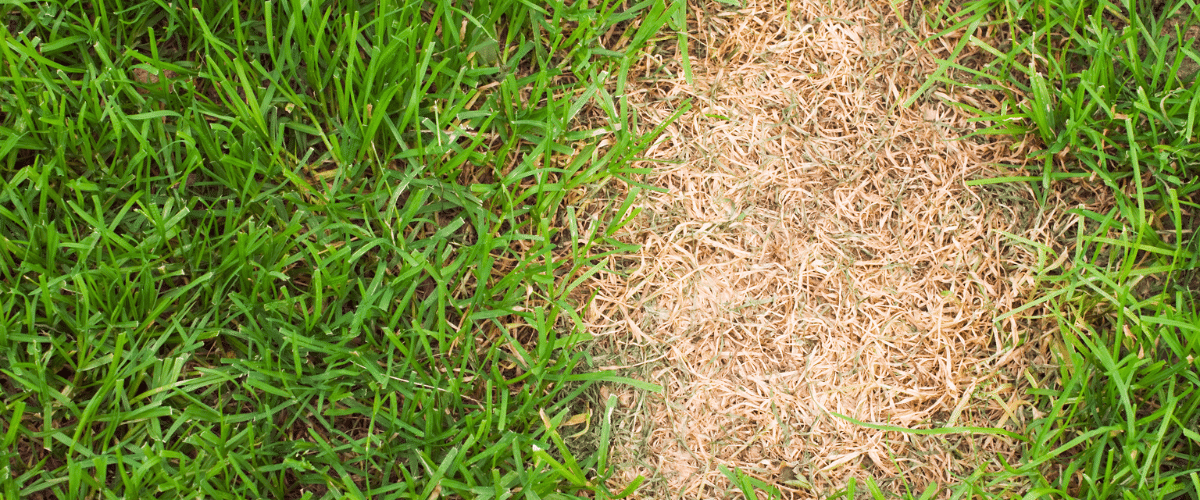Why Lawns Are Struggling Across the Northeast in 2025

This season has been especially tough on lawns throughout the Northeast, and we’re seeing the impact firsthand across Queensbury, Saratoga Springs, and nearby communities.
At Groundhogs Lawn Care, we’ve been tracking the pattern closely and helping homeowners navigate a year that’s been anything but predictable.
A Wet Spring, Then a Brutal Summer
A cold, wet spring delayed root development in most cool-season grasses. With soils saturated for extended periods, oxygen was limited at the root level, slowing down early growth. While lawns may have looked healthy and full in April and May, many were far less prepared than they appeared.
Then came late June – bringing intense heat, high humidity, and inconsistent rainfall. According to Dr. Frank Rossi of Cornell University, over 65% of days since late June have created moderate to severe stress for turf. Between hot daytime temps, warm humid nights, and dry spells, even healthy lawns have gone dormant in self-protection mode.
Signs of Heat Stress in Your Lawn
Here in the Queensbury area, many homeowners are noticing signs of heat stress on their lawn, seeing symptoms like:
- Grass turning brown or straw-colored
- Slower recovery after mowing
- Sudden weed growth in previously clean areas
- Patchy or thinning spots developing quickly
While it can be alarming to see these changes, they’re normal responses to the current conditions. Dormancy is a natural survival response, especially for cool-season grasses like Kentucky bluegrass, ryegrass, and fescue. It doesn’t mean your lawn is dead – just that it’s conserving energy until the weather improves.
Even Irrigated Lawns Are Struggling
One of the most frustrating parts of this season is that even lawns with sprinkler systems are struggling. With evaporation and plant water loss (transpiration) happening at such high rates during heat waves, many systems simply can’t apply water fast enough, especially if root systems are shallow from spring conditions.
In other words, watering isn’t always enough, particularly when it’s just sitting near the surface and never reaching deeper roots.
Why Weeds are Thriving Right Now
While grass slows down in high heat, weeds tend to do the opposite. This year, we’ve seen an aggressive surge in:
- Crabgrass
- Nutsedge
- Clover
- Dandelions
- Ground ivy
Because spring rainfall was so intense, many pre-emergent weed treatments were diluted or disrupted. And while pre-emergents are effective against grassy weeds, they don’t protect against many broadleaf varieties. With thin or damaged turf, weeds are taking every opportunity to fill the gaps – and they’re doing it fast.
But this isn’t just happening in your yard. It’s a widespread regional issue, even in professionally maintained properties.
Turf Diseases on the Rise
2025 has also been a prime year for turf diseases, fueled by unstable weather patterns and ongoing moisture stress.
- In the spring, red thread was extremely common, thriving in cool, damp conditions.
- Now, in the heat of summer, summer patch is appearing frequently, particularly in lawns with poor drainage, compacted soil, or thick thatch.
These diseases are a direct response to weather patterns and are affecting everything from residential lawns to sports fields and golf courses, and are more about environmental pressure than maintenance routines.
How to Support Lawn Recovery This Fall
If your lawn doesn’t look its best right now, that doesn’t mean it won’t recover. Lawns that have been consistently cared for (even if dormant) are well positioned to bounce back once conditions improve.
Here’s what we’re recommending for late summer and early fall:
- Avoiding mowing during peak heat and not cutting too short
- Water deeply and early morning, when possible
- Hold off on fertilizing during periods of extreme heat
- Keep an eye out for disease signs, and avoid over-stressing grass
Fall is one of the best times to help your lawn recover, especially with aeration, overseeding, and corrective treatments. If you’re unsure where to start, our team can walk your property and develop a tailored plan based on the current state of your lawn.
A Note from the Groundhogs Lawn Care Team
We know how frustrating this year has been. Even lawns with irrigation, professional care, and ideal soil conditions are showing signs of decline. This isn’t a reflection of poor care, but the result of extreme environmental stress and unpredictable weather.
As we move toward cooler nights and more stable conditions, your lawn will have a chance to regain strength. But recovery won’t be instant; it will take time, consistency, and the right approach.
At Groundhogs Lawn Care, we believe in long-term solutions. The foundation of a healthy lawn isn’t just in what you see on the surface, but in what’s happening below the soil. Thick, healthy turf isn’t just for looks – it’s your lawn’s best defense against weeds, drought, disease, and stress.
If you’re concerned about your lawn or want to plan for a stronger fall recovery, we’re here to help. Call Groundhogs Lawn Care, and let’s build a lawn that’s ready for anything.